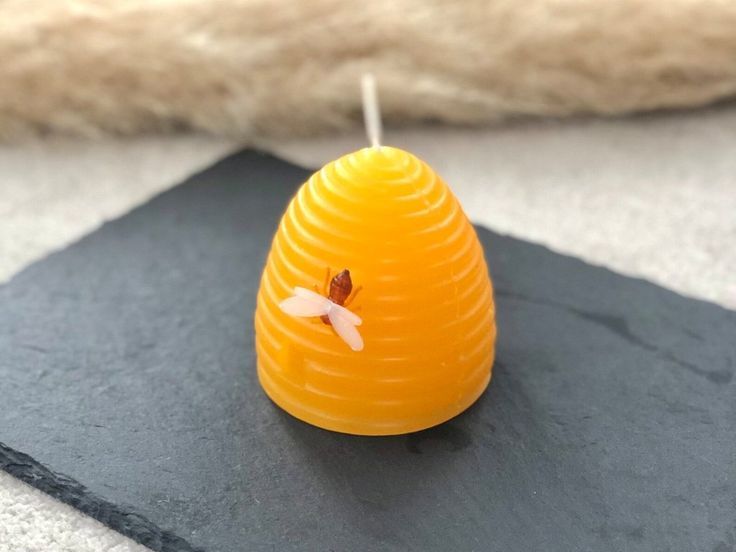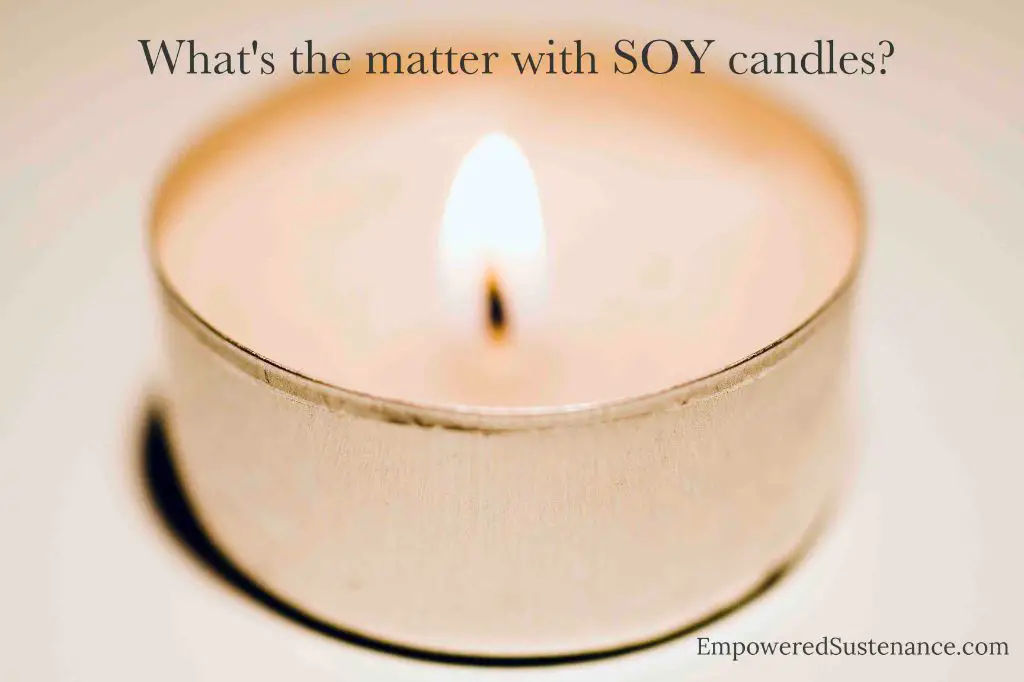Which Is Healthier Beeswax Or Soy Candles?

Beeswax and soy candles are two popular types of candles. Beeswax candles are made from beeswax produced by honey bees. Soy candles are made from soy wax, which is vegetable-based wax usually made from soybean oil. Both types of candles have been used for centuries.[1][2]
In this article, we will compare beeswax and soy candles, looking at how they are produced, their components, benefits, drawbacks, and overall health impacts. This will help determine which type of candle is healthier overall.
Beeswax Candle Production
Beeswax is produced by honey bees in their hives. Worker bees secrete wax from glands on their abdomen and use it to build the honeycomb structure where they store honey and pollen. To obtain beeswax for candles, beekeepers first extract the honey from the honeycomb by crushing and straining the wax comb. The leftover wax is then melted down and filtered to remove impurities like pollen and propolis.
The filtered liquid beeswax is then poured into molds to form blocks or pellets. These are then used to hand-roll candles or molded into pillar or taper shapes. Beeswax sheets can also be rolled around wicks to create rolled beeswax candles. Some beekeepers also use honeycomb directly, cutting sheets of wax comb and rolling them into candles (Source).
Compared to other waxes, beeswax requires minimal processing to turn it into candles. It is primarily melted, filtered and molded into shape. This preserves its natural honey aroma and beneficial properties like its ability to burn brighter and cleaner than paraffin wax.
Soy Candle Production
Soy candles start with soy wax, which is produced from soybean oil. Once the soybeans are harvested, they are cleaned, cracked, de-hulled, and rolled into flakes or pellets [1]. Soy wax comes in different varieties with varying properties, but candle makers typically use varieties that are optimized for container candles.
To make soy candles, the soy wax flakes or pellets are melted in boilers or double boilers. As the wax melts, fragrance oils, essential oils, or other additives can be blended in to provide desired scents, colors, or other properties [2]. Once mixed, the melted soy wax is carefully poured into containers or molds. As the wax cools and hardens, it takes the shape of the container to form the finished soy candle.
Soy candles are praised for their clean burn, environmentally friendly wax, and natural scents. The production process is relatively simple, allowing both large manufacturers and hobbyists to make soy candles with the desired custom colors, scents, and shapes.
Beeswax vs Soy Wax Components
Beeswax and soy wax have different chemical compositions that affect their properties and performance as candle waxes. Beeswax is a natural wax produced by honey bees. It is composed primarily of esters, fatty acids, and long-chain alcohols (Soy Wax vs Beeswax – The Sojourn Company). The main components are palmitate, palmitoleate, and oleate esters. Beeswax contains some 320 compounds, making it more complex than soy wax (Beeswax Pillar Candles vs Soy Candles: Does the Type of Wax Matter? – BC Candle).
Soy wax, on the other hand, is made from hydrogenated soybean oil. Its main components are palmitic, stearic, oleic and linoleic acids. Soy wax has a simpler chemical composition than beeswax, containing only 11 compounds (Soy Wax vs Beeswax – The Sojourn Company). The relative simplicity of soy wax compared to the complexity of beeswax impacts their respective burning properties and scent throw.
Beeswax Candle Benefits

Beeswax candles have several health and environmental benefits compared to paraffin wax candles. Since beeswax is a natural wax produced by honey bees, beeswax candles contain no synthetic chemicals or toxins (source). When burned, beeswax candles emit negative ions which help purify the surrounding air and neutralize odors and allergens (source). The honey scent also has a calming effect. Furthermore, beeswax has a high melting point so these candles burn longer than other types of candles.
Beeswax candles are non-toxic and environmentally friendly. Beeswax is biodegradable and comes from a renewable resource. The bees are not harmed in the collection process. Since beeswax candles burn clean, they produce very little soot or smoke. This makes them safer to burn indoors compared to paraffin candles which can produce toxins. Overall, beeswax candles are a natural, sustainable option that provides health benefits.
Soy Candle Benefits
Soy candles have gained a reputation for being an eco-friendly and sustainable candle option. This is because soy wax is often sourced from organic and renewable crops. Soybeans are renewable and biodegradable, meaning the ingredients for soy candles can be replanted season after season and don’t create extensive waste when discarded1. Many soy candle manufacturers use American-grown soybeans as well, reducing the carbon footprint associated with transportation and shipping2.
Compared to paraffin wax which is derived from petroleum, a non-renewable resource, soy wax is considered a more sustainable and environmentally-conscious choice for candle making. The renewable nature of soy wax makes it an appealing option for eco-friendly consumers.
Beeswax Candle Drawbacks
While beeswax candles have many benefits, they also come with some drawbacks to consider. One of the main downsides is that beeswax candles tend to be more expensive than other candle options. Beeswax itself is costly due to the labor-intensive process of collecting beeswax and the relatively small supply produced by honey bee hives (Source). As a result, handcrafted pure beeswax candles often come with a higher price tag.

Additionally, beeswax candle production is limited by how much beeswax can be harvested sustainably each year. Beeswax is produced by honey bees to build their honeycomb structures, so beekeepers must be careful not to take too much wax from the hive so the bees can maintain their home. This means there is a restricted supply of beeswax available to make candles, keeping prices elevated compared to other candle waxes.
Finally, some people may be allergic to beeswax or react to the residual bee proteins, pollen, or propolis found in beeswax candles. Those with bee venom allergies in particular should use caution and do a skin test before burning a beeswax candle for extended periods (Source). For people with sensitivities, soy, paraffin, or other candle waxes may be preferable.
Soy Candle Drawbacks
While soy candles have gained popularity as an eco-friendly alternative to paraffin candles, they do have some potential drawbacks to consider:
Lower Quality: Compared to beeswax or paraffin candles, some find the quality and performance of soy candles to be lower. The burn time may be shorter and the fragrance throw weaker than other candle types [1].
GMO Risks: Most soy used in candles is genetically modified. While the health impacts of GMOs are still debated, some prefer to avoid them. Beeswax and paraffin wax do not have any GMO risks.
Soot Buildup: Soy candles tend to produce more soot than beeswax or paraffin. This black residue can dirty candle holders, walls, and surfaces where the candle burns. Proper wick trimming can help reduce soot.
Which is Healthier Overall?
When comparing the health factors of beeswax candles versus soy candles, beeswax comes out slightly ahead overall. Beeswax candles produce less soot and burn cleaner than soy candles, releasing mainly CO2 and water vapor into the air. The natural honey scent of beeswax can also have aromatherapeutic benefits. However, soy candles are better for people with bee allergies or vegans who want to avoid animal products. Both candles are non-toxic options made from natural ingredients. But beeswax emits negative ions that help clean the surrounding air whereas soy wax has no ionizing effect. In terms of ingredients, beeswax comes directly from honeybees whereas soy wax goes through more chemical processing. Burn times can vary but generally beeswax candles burn longer. So for those concerned about health and air quality, beeswax candles are a slightly better choice. But soy candles work well for vegans and people with allergies. Both candle types are far superior to paraffin in terms of health.
Conclusion
Both beeswax and soy candles have benefits and drawbacks when it comes to health factors. Beeswax candles are made of natural wax, avoiding toxins from paraffin found in many candles. The honey scent provides a relaxing ambiance. However, beeswax candles emit small amounts of formaldehyde when burned. Soy candles also burn cleaner than paraffin candles, and the soy wax is a renewable, sustainable resource. But soy candles produce more soot, and there are debates about whether soy farming is truly eco-friendly.
Overall, for candle health, beeswax candles seem to have a slight edge over soy candles. Beeswax is a more natural product, avoiding industrial processes that soybean oil may go through. The honey bee farms also provide wider environmental benefits. While soy is renewable and burns cleaner than paraffin, some drawbacks like soot exist. In the end, both candle types are far healthier than paraffin candles, but 100% beeswax candles avoid the potential negatives of industrial soy processing. For people seeking the healthiest candle option, locally-sourced, pure beeswax candles are the best choice.




